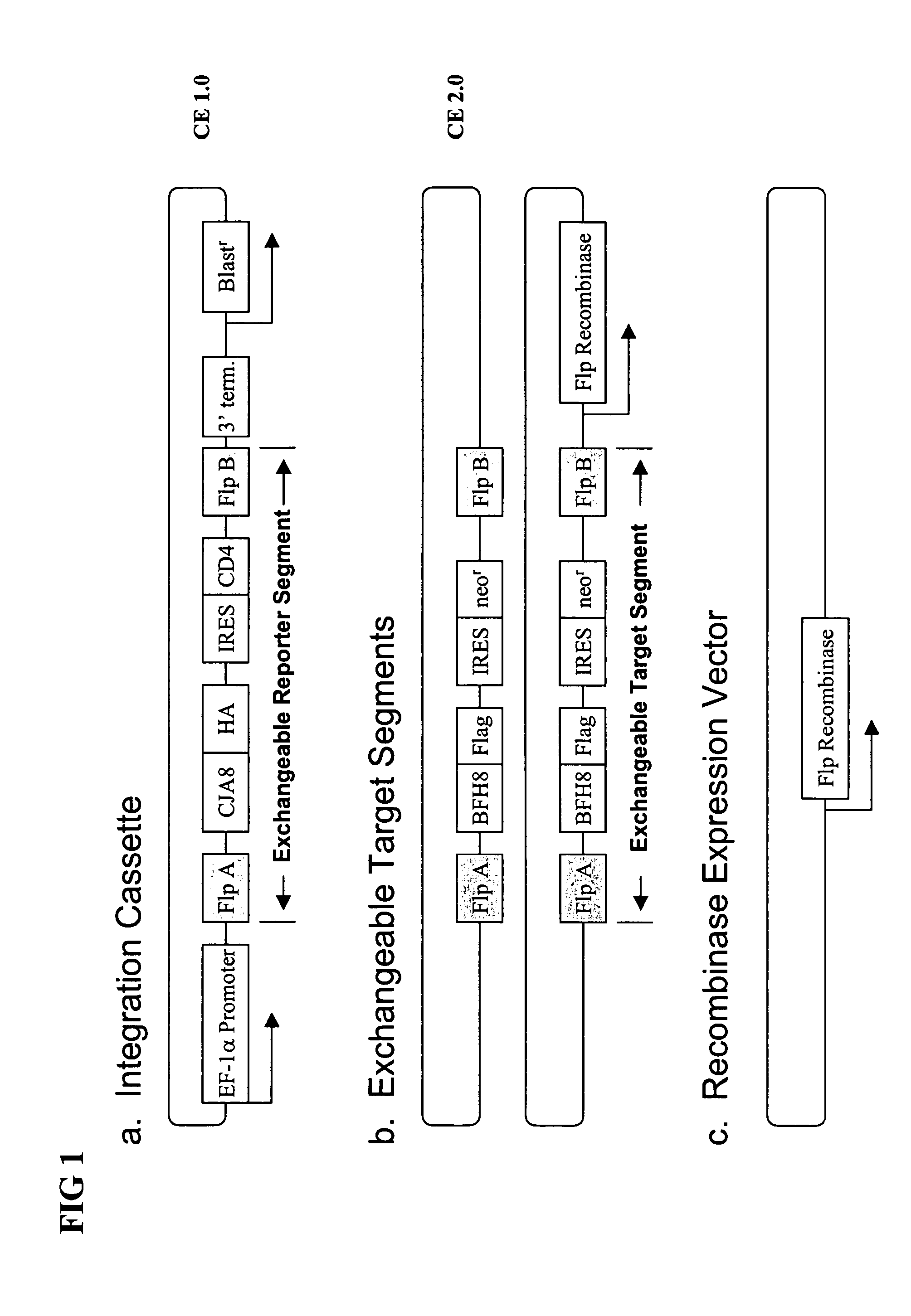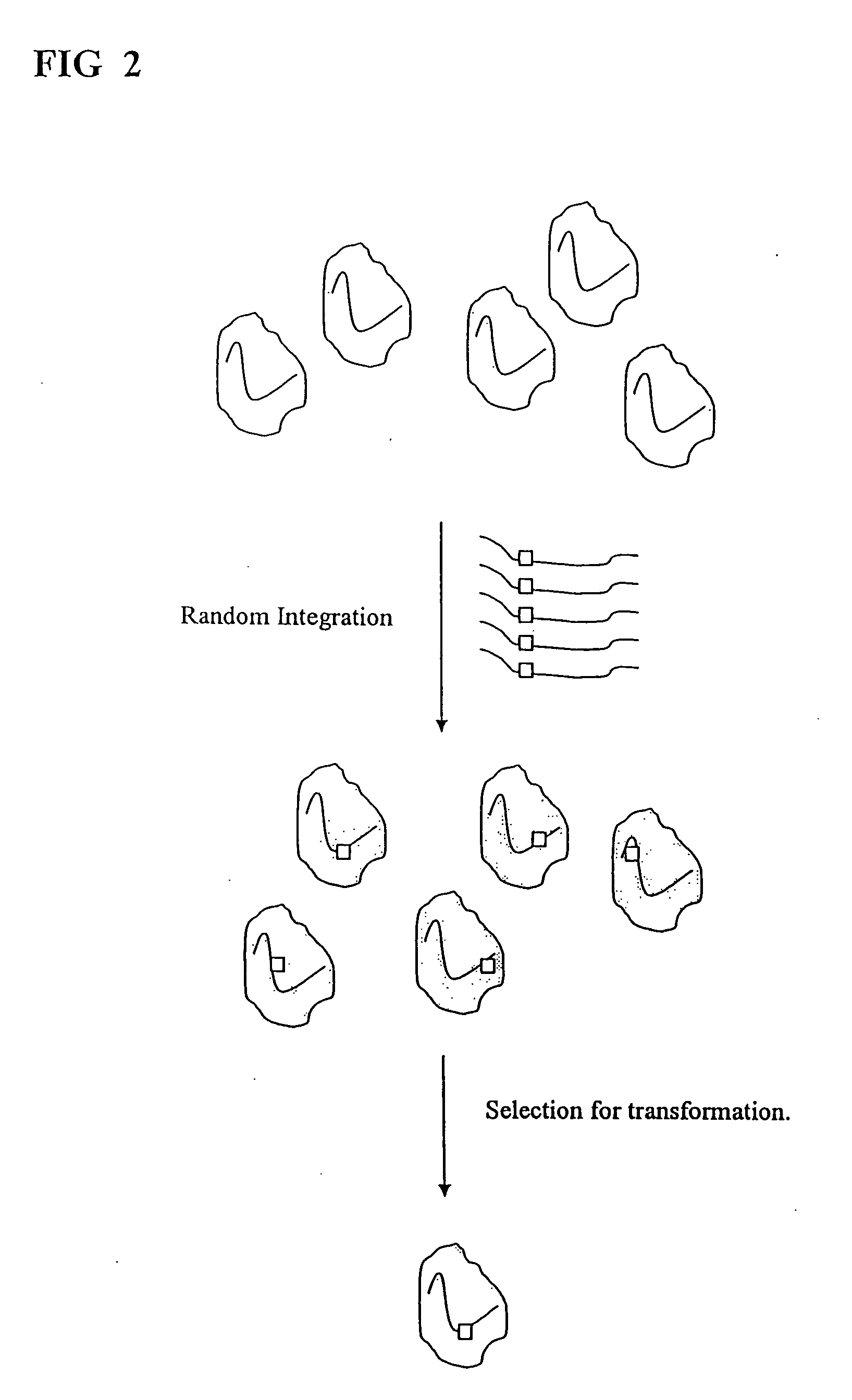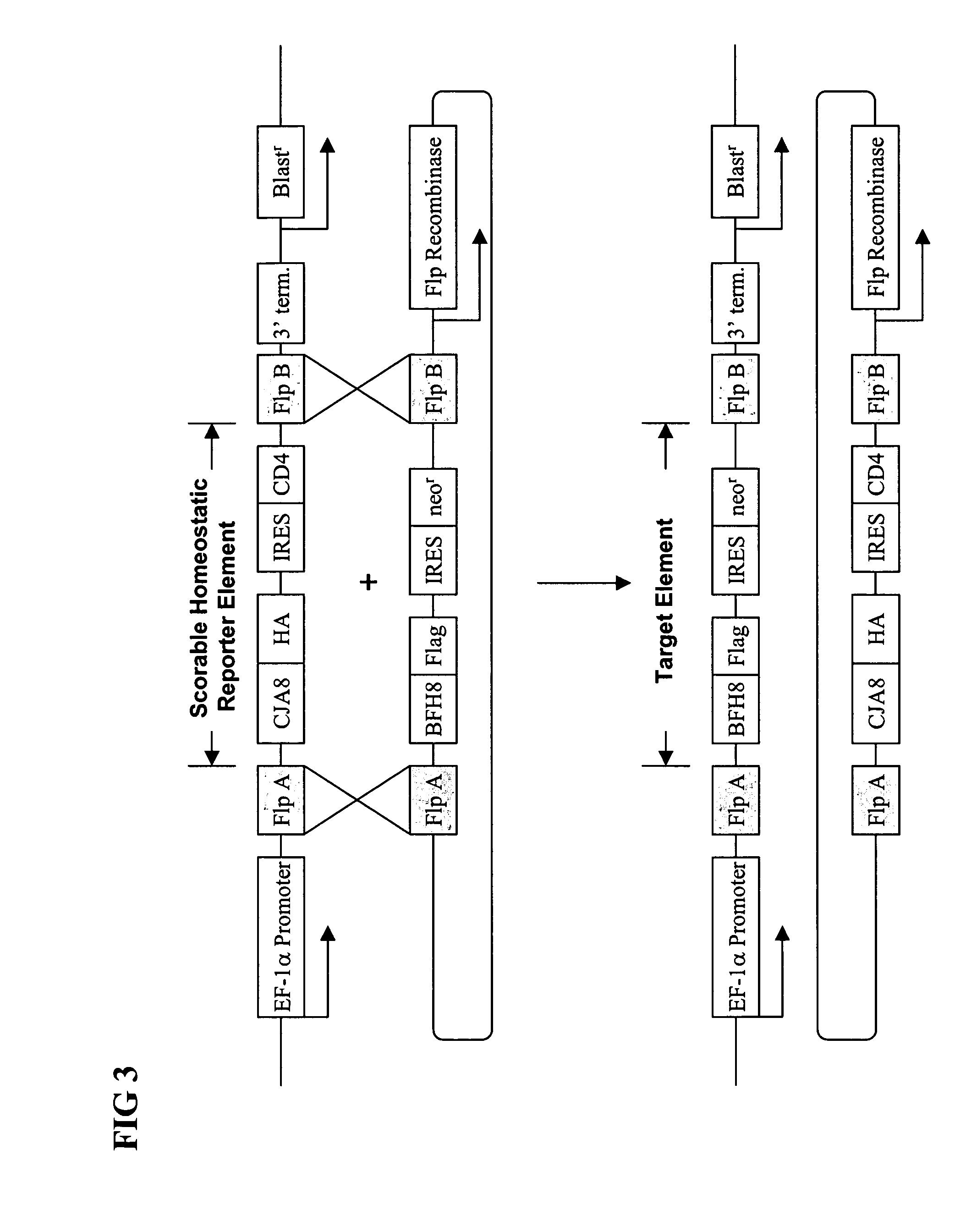Efficient generation of expression cell lines through the use of scorable homeostatic reporter genes
a reporter gene and efficient technology, applied in the field of efficient generation of expression cell lines through the use of scorable homeostatic reporter genes, can solve the problems of increasing the complexity of acquiring the expression system by several orders of magnitude, recombinant genes, and being incapable of supporting transcriptional events at all, so as to achieve rapid and efficient means of production
- Summary
- Abstract
- Description
- Claims
- Application Information
AI Technical Summary
Benefits of technology
Problems solved by technology
Method used
Image
Examples
example 1
Transformation of Chinese Hamster Ovary (CHO) Cells with an Integration Cassette
[0247] A pCE 1.0 CJA8 integration cassette was transfected into a CHO cell line by mixing 5 μg of purified vector DNA with 15 μl of Fugene transfection reagent and added to culture media containing 2×106 cells on a 150 mm dish. After overnight incubation, cells were split (1:15) into new media supplemented with 2.5 μg / ml blasticidin. This selective media was changed every third day for two weeks. This selection resulted in several hundred colonies of about 1000 cells that had successfully integrated the vector.
[0248] The blasticidin resistant cells were removed from the plate with a PBS / EDTA solution and mixed to create a single cell suspension. The cells were then stained with an anti-CD4 antibody that had been labeled with a fluorescent dye (FITC). The stained cells were washed with PBS and run through a sterile FACS sort. The brightest 0.5% of the cells were collected and cloned by limiting dilution...
example 2
Exchanging a Reporter Segment for a Target Segment Using the Flp Recombinase System
[0250] A single clone from example 1 was expanded and transfected with plasmids containing an Flp recombinase expression cassette and the CE 2.0 BFH8 exchangeable target segment. The Flp recombinase mediated exchange of the CE 2.0 BFH8 exchangeable target segment for the exchangeable reporter segment in the integration cassette pCE1.0CJA8. After overnight incubation, the transfected cells were split (1:15) and G418 added to a concentration of 500 μg / ml. The cells were cultured in media containing 500 μg / ml G418 for two weeks, with media changes every three days. Under these conditions, cells that had successfully integrated the CE 2.0 exchangeable target segment were neo / G418 resistant and formed small colonies under the selective growth conditions.
[0251] Clones isolated in the manner described above were of two types. Most clones had successfully exchanged segments and were G418 resistant / CD4 negat...
example 3
Constructing an Antibody Library
[0252] For a light chain gene or library we will start by transfecting the pCE 3.0 CJA8 vector into a cell line containing the pCE1.0 vector at a highly expressed site. So 5 ug of purified vector DNA will be mixed with 15 ul of the Fugene transfection reagent and added to the culture media of 2×106 cells on a 150 mm dish. The following day the cells will be split (1:15) and hygromycin will be added to the appropriate concentration for selection (200 ug / ml). This selective media will be changed every third day for two weeks. At this point cells that have successfully integrated this second vector will be blasticidin and hygromycin resistant and will have grown into colonies containing about 1000 cells. There will be several hundred colonies on the plate.
[0253] The cells will be removed from the plate with a PBS / EDTA solution and mixed to create a single cell suspension. The cells will then be stained with an anti-CD8 antibody that has been labeled wi...
PUM
| Property | Measurement | Unit |
|---|---|---|
| concentration | aaaaa | aaaaa |
| concentration | aaaaa | aaaaa |
| concentration | aaaaa | aaaaa |
Abstract
Description
Claims
Application Information
 Login to View More
Login to View More - R&D
- Intellectual Property
- Life Sciences
- Materials
- Tech Scout
- Unparalleled Data Quality
- Higher Quality Content
- 60% Fewer Hallucinations
Browse by: Latest US Patents, China's latest patents, Technical Efficacy Thesaurus, Application Domain, Technology Topic, Popular Technical Reports.
© 2025 PatSnap. All rights reserved.Legal|Privacy policy|Modern Slavery Act Transparency Statement|Sitemap|About US| Contact US: help@patsnap.com



